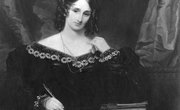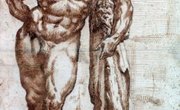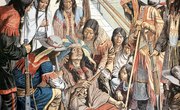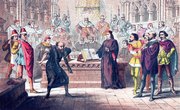What are some Egyptian Beliefs on the Underworld and Horus?
Horus was the son of the Egyptian god, Osiris, and the goddess, Isis. According to ancient Egyptian mythology, Horus was originally a sun or sky deity. He was the manifestation of the sun god Ra's strength. Horus appears in many different forms, but is often depicted as a falcon-headed god. He is also depicted as a small child seated on his mother's lap.
Similar to the Greek and Christian beliefs, Egyptians had depictions from the old kingdom to see into the world of their Egyptian religions, like looking to the lord of the underworld for guidance in the embalming, funerary and mummification processes with the Egyptian book of the dead or seeing how eternal life was made possible through the Egyptian underworld’s processes.
The book of the dead is very common within Egyptian beliefs of the underworld, as many coffin texts and tales of a devourer and dead king are shared within its beliefs throughout upper Egypt and lower Egypt, as well as in the middle kingdom and new kingdom over time. Beliefs were woven into Egyptian hieroglyphs left throughout Egypt ruins, and these hieroglyphs often contained symbols, locations and gods like Anubis, Seth or Brother Seth, Maat, Nephthys or Sister Nephthys, Nut, Geb, jackals, Abydos, Atum, the Ptolemaic Kingdom, and Thebes. Egyptian enemies and enemy weapons, like the Romans and flails, were also included in many Egyptian drawings.
The Parentage of Horus
The ancient Egyptian god, Osiris, was the king of Egypt, but his evil brother Set, sought to dispose of Osiris and become the rightful ruler. Set tricked Osiris into getting into a golden coffin, then locked the door and threw the coffin into the Nile River. Isis recovered the body of her husband, but Set took it once again. This time, he cut the body into 14 pieces and threw it into the Nile. Isis collected the pieces and reassembled them. Isis turned into a hawk, and breathed life back into Osiris with the beating of her wings. After restoring Osiris to life, Isis conceived her son Horus, with her resurrected spouse.
The Underworld
After being restored to life, Osiris became king of the underworld or god of the underworld. In ancient Egyptian mythology, the underworld, also known as the duat, had great significance since the ancient Egyptians believed a person could not enter the realm of the gods without going to the underworld. Once there, a person's heart would be weighed on a scale, and if the person's bad deeds outweighed his good, a monster with the head of a crocodile would eat the heart. Horus became his father's representative in the world, and mediator between the world above and the underworld. Horus guided the souls of the dead to the throne of his father, Osiris, in the underworld.
The Battle Between Set and Horus
Isis and Horus both wanted revenge on Set for the death and subsequent descent of Osiris into the underworld. Horus also wanted to claim his divine inheritance to rightful kingship that had been usurped by Set. Horus and Set battled each other with magic, first by racing in stone boats. Horus won by making his boat of plaster and wicker. Next, they changed themselves into hippos to see who could stay underwater longer. Horus wanted his mother to kill Set while he was under the water in hippo form, but she refused to kill her brother. Horus hid from Set, but Set found him and gouged out his eyes. According to one version of the myth, the goddess Hathor restored his eyes, but another myth states that only one eye was restored by the god of healing, Thoth. The struggle ended when Horus destroyed Set's power by ripping off his testicles.
Symbols and Aspects of Horus
The pharaohs of ancient Egypt identified themselves with Horus as his living representative on Earth, thereby being associated with Horus's divine kingship. The eye of Horus, alluding to the mythology, became a symbol of perfection to the ancient Egyptians. The eye symbol became a powerful amulet that was found on jewelry and in tombs. It was also a symbol of protection. Because Horus appeared in many forms, and other deities were often assimilated into the form of Horus, the ancient Egyptian god was worshiped at countless temples and sacred sites throughout Egypt.
Related Articles
References
Writer Bio
Darlene Zagata has been a professional writer since 2001, specializing in health, parenting and pet care. She is the author of two books and a contributing author to several anthologies. Zagata attended the Laurel Business Institute to study in the medical assistant/secretarial program. She earned her associate degree through the U.S. Career Institute.










